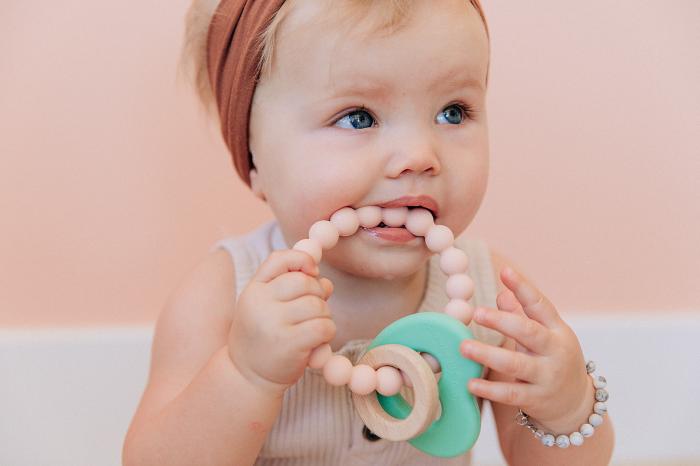Chewbeads have become popular among parents looking for safe teething solutions for their babies and toddlers. These colorful, often stylish accessories are designed for little ones to chew on. However, many parents have concerns about their safety. This article explores the safety of chewbeads, their materials, and how to use them responsibly.
What Are Chewbeads?
Chewbeads are made from silicone and are designed to provide relief for babies who are teething. They come in various shapes, colors, and sizes, making them visually appealing for children. Many chewbeads are also designed as necklaces or bracelets for parents to wear. The idea is that while a baby is chewing, the parent can wear the accessory without fear of it being dangerous.
Materials Used in Chewbeads
One of the main concerns about chewbeads is the materials used to make them. Most chewbeads are made from food-grade silicone. This material is generally considered safe for children.
Silicone vs. Plastic
Silicone is a better choice than plastic for several reasons:
Non-toxic: Food-grade silicone does not contain harmful chemicals like BPA, phthalates, or lead. These chemicals can be harmful to children.
Durable: Silicone is more durable than plastic. It can withstand a lot of chewing and pulling, making it last longer.
Easy to clean: Silicone is easy to clean. Most chewbeads can be washed with soap and water or placed in the dishwasher.
Potential Hazards of Chewbeads
While chewbeads are generally considered safe, there are some potential hazards that parents should be aware of.
Choking Hazards
One major concern is choking. Babies and toddlers can put anything in their mouths, and chewbeads are no exception. Here are some tips to minimize choking risks:
Supervision: Always supervise your child while they are using chewbeads.
Size Matters: Make sure the beads are large enough that they cannot be swallowed.
Check for Damage: Regularly inspect the chewbeads for signs of wear and tear. If you notice any cracks or breaks, it’s best to discard them.
Strangulation Risks
Chewbeads that are worn as necklaces can pose a strangulation risk.
Short Necklaces: If you choose to use chewbeads as a necklace, ensure that the necklace is short enough that it cannot wrap around your child’s neck.
Breakaway Clasps: Look for chewbeads that come with breakaway clasps. These will release if too much pressure is applied, reducing the risk of strangulation.
Age Appropriateness
When considering whether to use chewbeads, it is important to think about your child’s age.
Infants: Infants who are just starting to teeth may benefit from chewbeads. However, it is crucial to supervise them closely.
Toddlers: Older toddlers may use chewbeads more independently. Still, supervision is recommended to ensure they do not misuse them.
Guidelines for Safe Use
To ensure the safe use of chewbeads, consider the following guidelines:
Choose Quality Products: Always buy chewbeads from reputable brands. Look for products that meet safety standards and are made from high-quality materials.
Regular Cleaning: Clean the chewbeads regularly to keep them hygienic. Use soap and water or a dishwasher if they are dishwasher-safe.
Educate Your Child: Teach your child how to use chewbeads properly. Explain that they should not be used for anything other than chewing.
Alternatives to Chewbeads
If you have concerns about chewbeads, there are alternative teething solutions available.
Teething Rings
Teething rings are a popular choice for infants. They can be made from rubber, silicone, or even wood. Many teething rings can be cooled in the refrigerator to provide additional relief for sore gums.
Cold Washcloths
A simple, effective solution is a cold washcloth. Wet a clean washcloth, twist it, and place it in the refrigerator. Once it’s cold, let your baby chew on it. The cold can help soothe their gums.
Teething Toys
There are many types of teething toys designed for babies and toddlers. Look for toys that are made from safe materials and are free from harmful chemicals.
See also: Are Wood Teethers Safe
When to Consult a Pediatrician
If you have any concerns about your child’s teething or the use of chewbeads, it’s important to consult a pediatrician. They can provide guidance tailored to your child’s specific needs. Signs that you should consult a pediatrician include:
Excessive drooling
Irritability that does not improve with typical teething remedies
Swollen gums that seem to cause significant pain
Conclusion
Chewbeads can be a safe and effective solution for soothing teething pain when used correctly. The materials used are generally safe, and they can provide relief for babies and toddlers. However, parents must remain vigilant about potential hazards, such as choking and strangulation.
Always supervise your child while they use chewbeads and choose high-quality products. If you have concerns, don’t hesitate to consult a healthcare professional. By taking the necessary precautions, you can ensure that chewbeads remain a fun and safe option for your little one during their teething journey.
Related topics:


